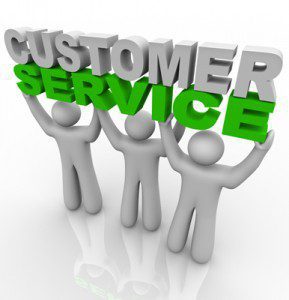There are now a good number of brands that have identified social media as a channel for customer service (Best Buy, Starbucks, Dell, Zappos to name a few). First, there was the automation
trend. Then there was the outsourcing boom. Now there is the social media channel. It seems, however, that most companies still view customer service as a cost, a necessary evil. Very few have the Zapposian obsession with making customer and service the two key values of the business. I deeply believe that customer loyalty lies in the excellence of customer service.
Is social media the right choice for customer service?
Undoubtedly, the answer to this question is that it depends. The big question you must start with is: Our your customers actually looking for you on social media?
That said, the second question is a much more difficult one: is your company geared to be truly customer centric? Here are a few questions that should help identify customer centricity in your organization?
- is your Customer Service in-house?
- how personal is your customer service (i.e. how easy is it do get a human and informed answer)?
- does your company LOVE customer feedback?
- is there a seamless way for customer feedback to be channelled through the company?
- is transparency a part of your company culture — and, if it is not (which is, as it happens, ok with me to a certain extent), then are your people well versed in what they can or cannot say?*
- when a customer asks a question and you personally don’t have the answer, do you know who is the right person to ask for the answer?
- when you ask a colleague from another department to help you out with a customer problem, do they willingly and rapidly provide the solution/answer?
- is the FAQ truly a list of questions that are genuinely and frequently asked by your customers?
- do the answers on your FAQ provide true answers (and at the same time, transparent insight into your company culture)?
Once a company answers with honesty these questions, the further question can now be answered: should my brand use social media for its customer service?
Successful social customer service requirements
Three keys — that you probably won’t read regularly and that I believe are critical — to channelling successfully customer service via social media. (Of course, there are more keys, but these are my top three):
- Customer service needs to be a part of the brand fabric. Concretely, this means that customer service data should be a part of executive committee meetings. Marketing, sales and customer service departments should have regular and fluid communication. I’d even go so far as to say that a career in customer service should be considered a valued and valuable part of your organization. If Customer Service is outsourced or automated, then you are effecting disconnecting with your customer.
- For customers to know that a certain social media (ie Twitter) is the place to go for customer service, the entire organization must be aware, and the communication plan must help channel customers. Especially when there are other social media activities, each platform or initiative must be clearly segmented not to provoke too much confusion (in the eyes of the customer, much less internally).
- Speed and authenticity are essential to solid customer service. Knowing that some situations are irretrievable, the remainder of the customer service issues can be turned around with a level of humility, a degree of legitimate concern and empathy and, above all, rigorous timeliness.
*Bear in mind that basically 95% of all company information is/can be of public domain. The trick is carefully determining the critical and strategic 5% that is truly vital to keep your competitive advantage.













Neat Website, Stick to the great work. Many thanks!
You’ve got amazing knowlwdge here.
I appreciate the details on your websites. Thanks a lot!